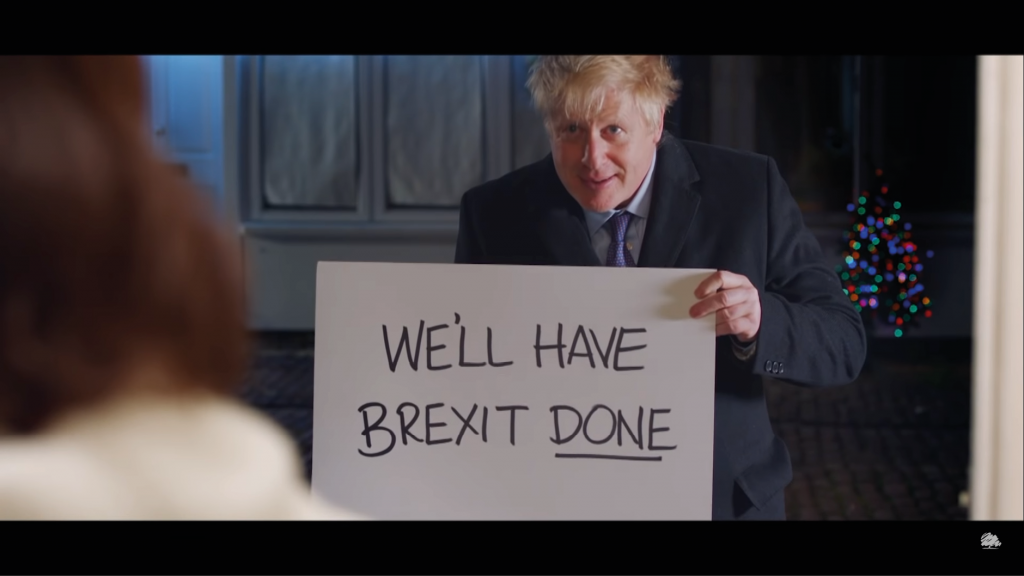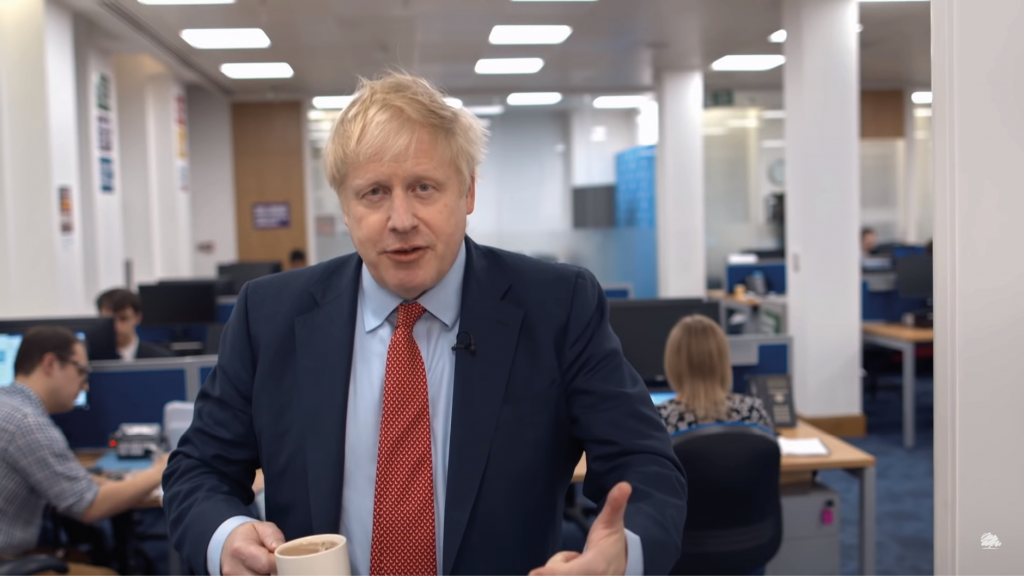
Dr Vincent Campbell
Associate Professor in the School of Media, Communication and Sociology, University of Leicester.
Email: vpc2@le.ac.uk
Twitter: @Campbell_VPC

Section 4: Parties and the Campaign
- Something old, something new, something borrowed, something EU
- ‘Weak and wobbly’ to ‘get Brexit done’: 2019 and Conservative campaigns
- Conservative victories in Labour heartlands in the 2019 General Election
- More Blimp, less Gandhi: the Corbyn problem
- Corbyn and Johnson’s strategic narratives on the campaign trail
- The media and the manifestos: why 2019 wasn’t 2017 redux for the Labour party
- The Brexit Party’s impact – if any
- Down a slippery rope… is Britain joining the global trends towards right-wing populism?
- Farage: losing the battle to win the war
- GE 2019: lessons for political branding
- The postmodern election
In the 1951 General Election the first ever televised Party Election Broadcasts were the only television content about the campaign (other than the results). By comparison, PEBs achieved less than a tenth of a percent of the television audience share in 2019. Over time, their function has shifted from centre-pieces of party campaigns, to packaged efforts to promote leaders, to agenda-setting vehicles through sometimes controversial content. Much like 2017, though, the majority of the 2019 PEBs came and went with little to no impact or attention at all, bar a couple of notable exceptions.
Whilst some researchers have claimed to show potential influence on voters in the past, partially explaining continued close party attention to them, any influence depends on things like exposure and attention which this year’s crop seemed to largely fail to achieve. For all the assertions about differential impacts of different styles of ads, this was possibly because several parties seem to have decided to use essentially the same style of PEB. Labour, the Liberal Democrats and the Brexit Party featured PEBs focused on their respective leaders in one PEB and then other PEBs drawing substantively, or exclusively, on the images and voices of candidates, members, and supporters from the general public. They all used incredibly similar film styles, with lots of location shots, talking heads and campaigning imagery, set against orchestral scores. Labour’s PEBs had a somewhat melancholy tone, focused on the deprivations of austerity, and this was mirrored by a surprisingly similar tone to the Brexit Party PEBs, though the focus there was on the blocking of Brexit, and by the Lib Dems in turn, who focused on the frustrations of the major parties. The Lib Dems including former Tory and Labour MPs alongside Jo Swinson may, with hindsight, be seen as a mistake given how they all lost their seats. The Greens, always trying to use PEBs to agenda-set, centred both of their PEBs on Caroline Lucas, the second of them, “If not now, when?”, featuring Lucas in a grainy, black and white, extreme close-up single shot, offering an almost poetic monologue, with little response (just 10,000 views on Youtube to date [with all figures that follow correct at the time of writing]).
The only PEBs that seemed to generate wider attention were the Conservative ones at the beginning and end of the campaign, both using notable gimmick approaches. The first, “Twelve Questions to Boris”, provoked debate, partly about the superficial questions he was being asked in what was a mock interview on the hoof (fish and chips or Sunday roast; marmite yes or no) but predominantly over his preparation of a cup of tea by putting milk in with the tea bag still in it, and then not taking the tea bag out. What The Sun (and others) dubbed a ‘Storm in a Teacup’, even made international news as far afield as New Zealand, and drew comparisons to the cringeworthy comedy of The Office. In an era where almost every action or statement is now taken to be a “dead cat strategy” to divert attention from substance, whether by accident or strategic intent, it did at least draw attention to the PEB (viewed 261,000 times on YouTube), even if the Prime Minister’s inability to make a proper cup of tea wasn’t the level of faux pas the debates suggested it might/should have been.
Towards the end of the campaign, “Vote Conservative, Actually”, also generated substantial public attention (606,000 views on YouTube). Parodying a scene in what is now a classic British Christmas movie, Love, Actually, the PEB features Boris again. A key scene in the movie features Andrew Lincoln silently declaring his love for (married woman) Keira Knightly through a series of cards which he shows her whilst standing at her door and carol singer music plays. The PEB has Boris in Lincoln’s role, with cards spelling out plans to get Brexit done. Hugh Grant, one of the stars of Love Actually and an active Remainer who canvassed for several pro-Remain candidates, was asked for his view on the PEB on Radio 4. He noted that unlike the original film “one of the cards … Boris Johnson didn’t hold up was the one saying ‘Because at Christmas you tell the truth’”. Others noted the irony of recreating a scene where a man declares his love for a married woman, with Boris’ notorious personal history.
Deliberately copying Love, Actually, and making something that others likened to The Office, arguably illustrates as clearly as anything else Johnson’s populist approach, one others may follow in future, as well as indicating that whilst PEBs may be receding ever further into electoral insignificance, they still, on occasion, can play a distinctive role.


